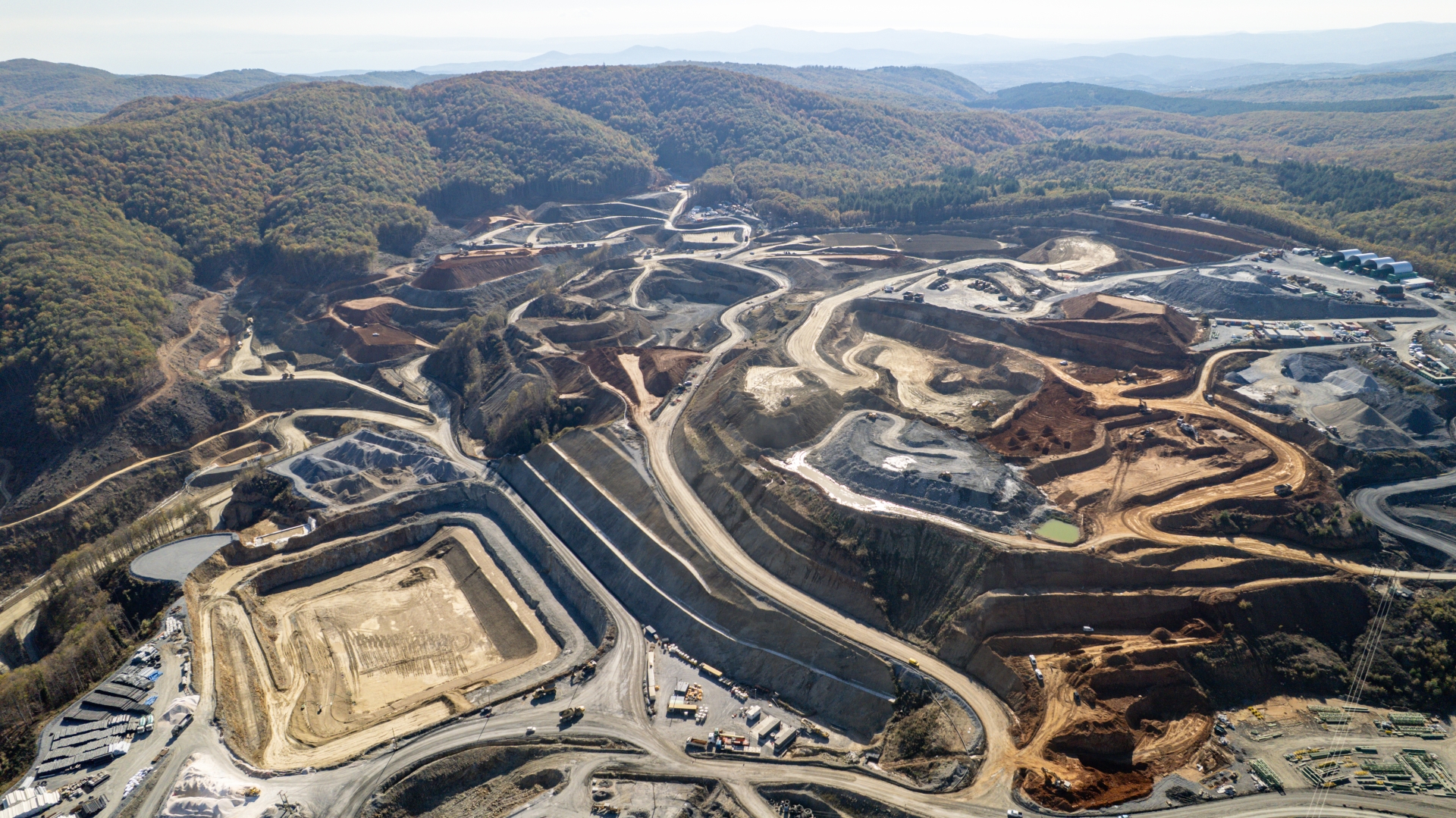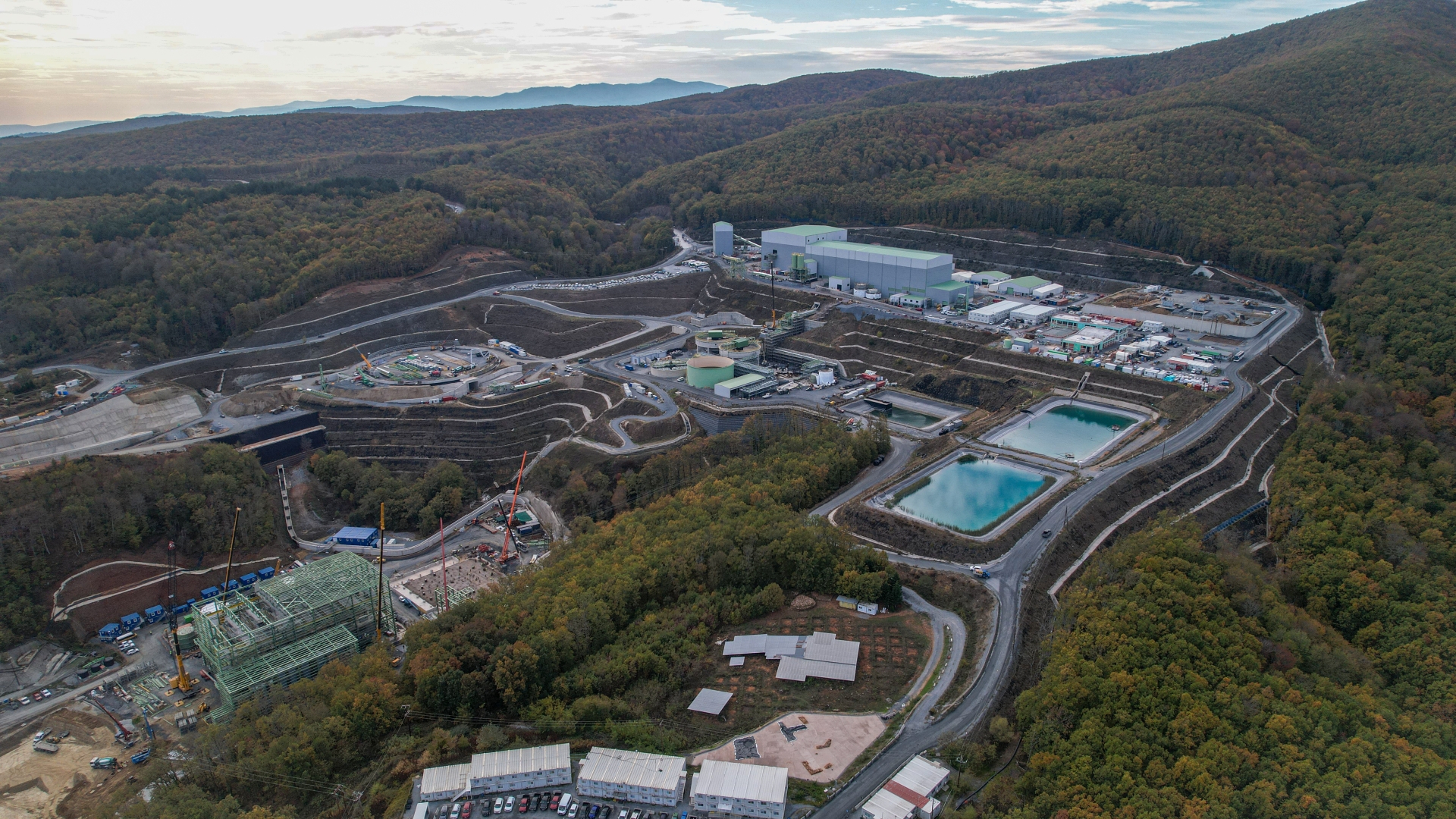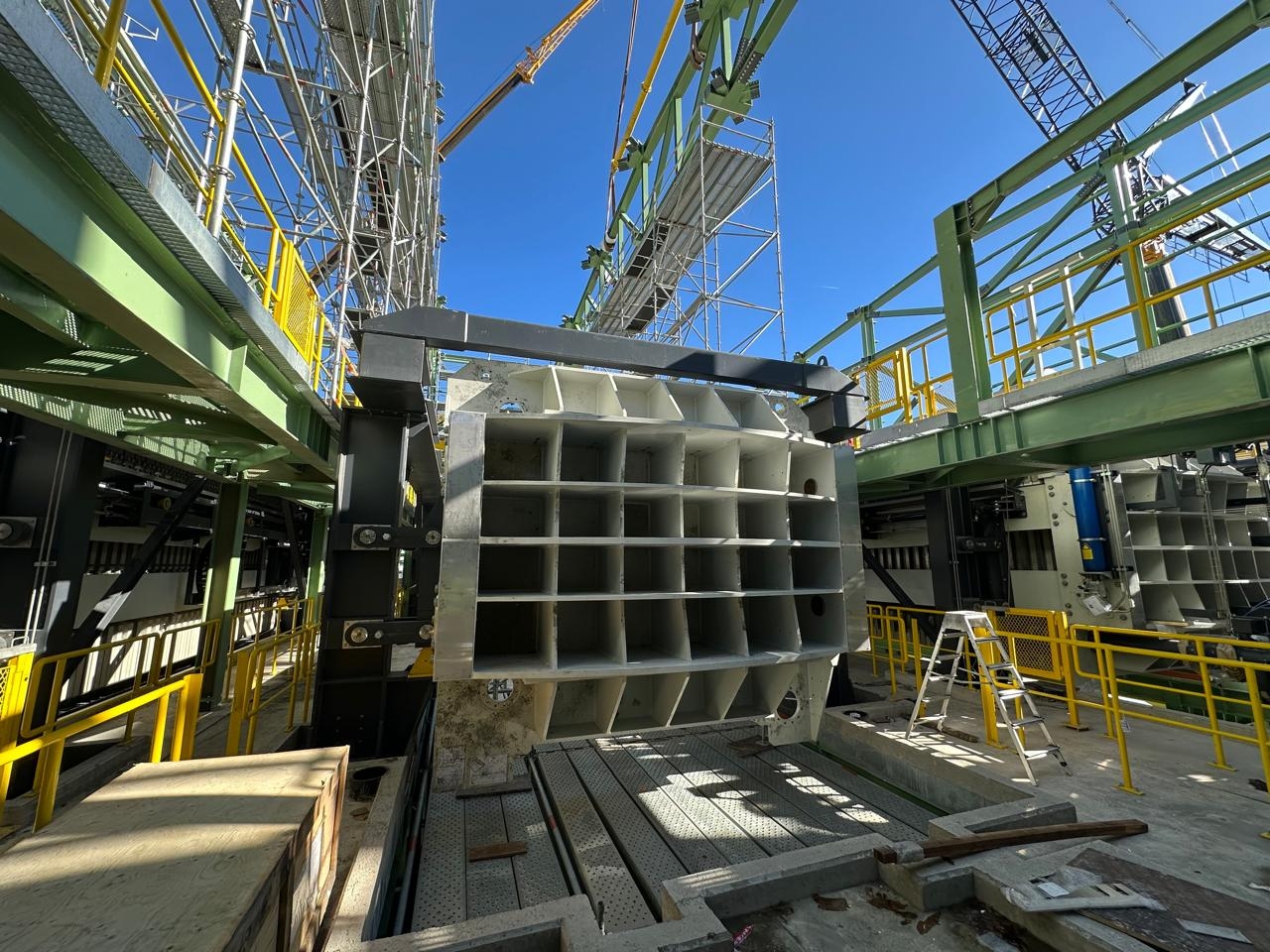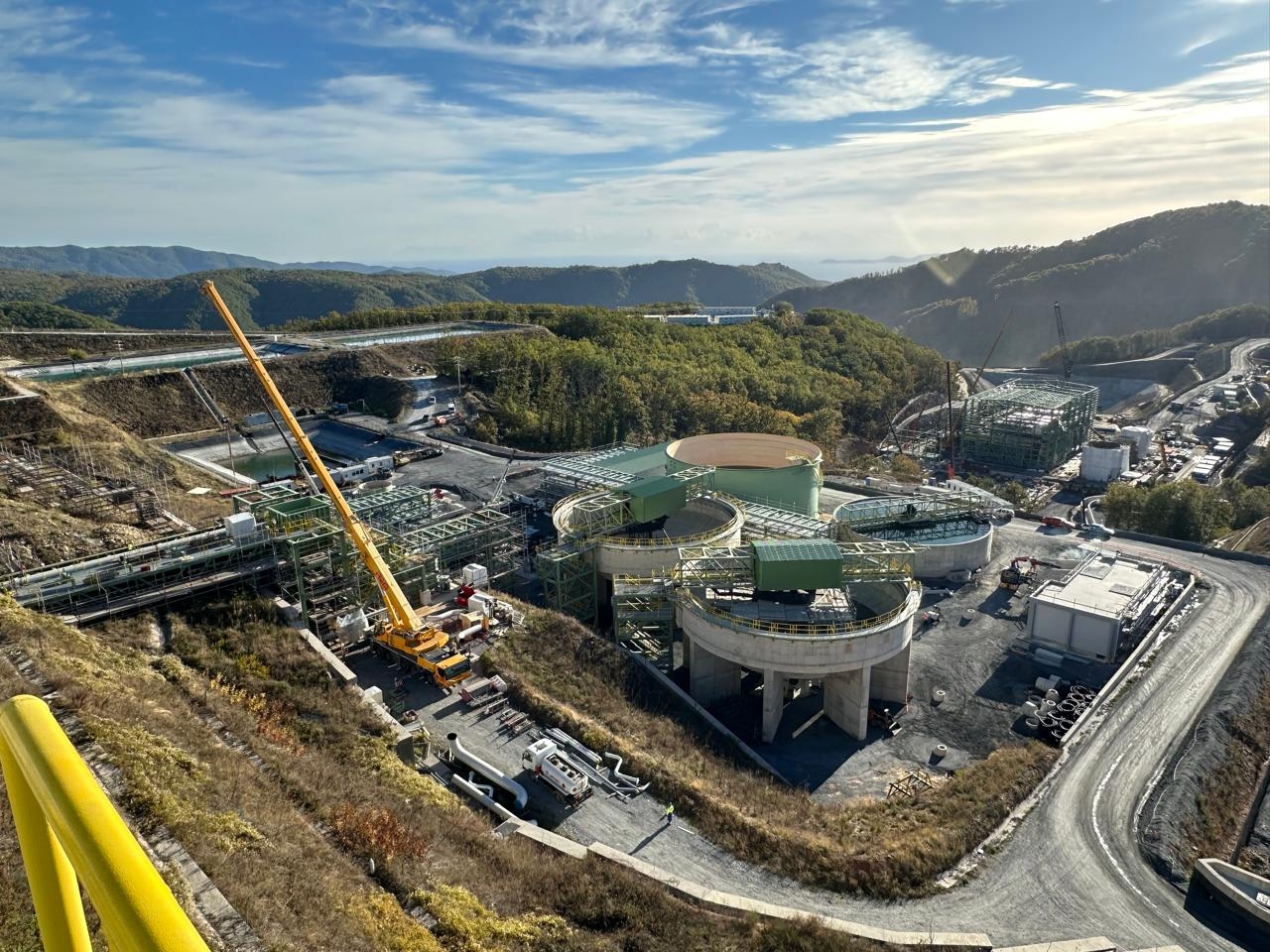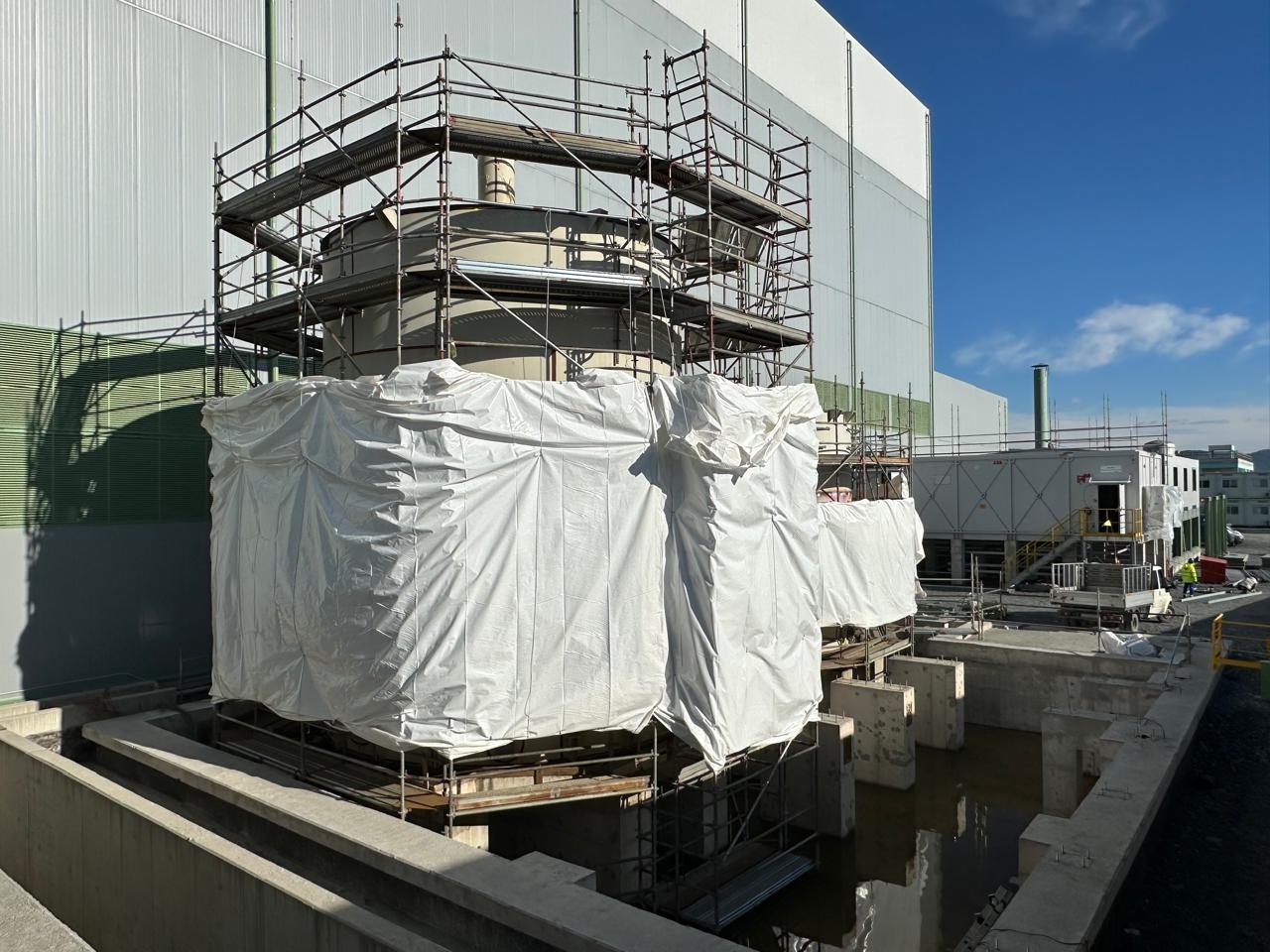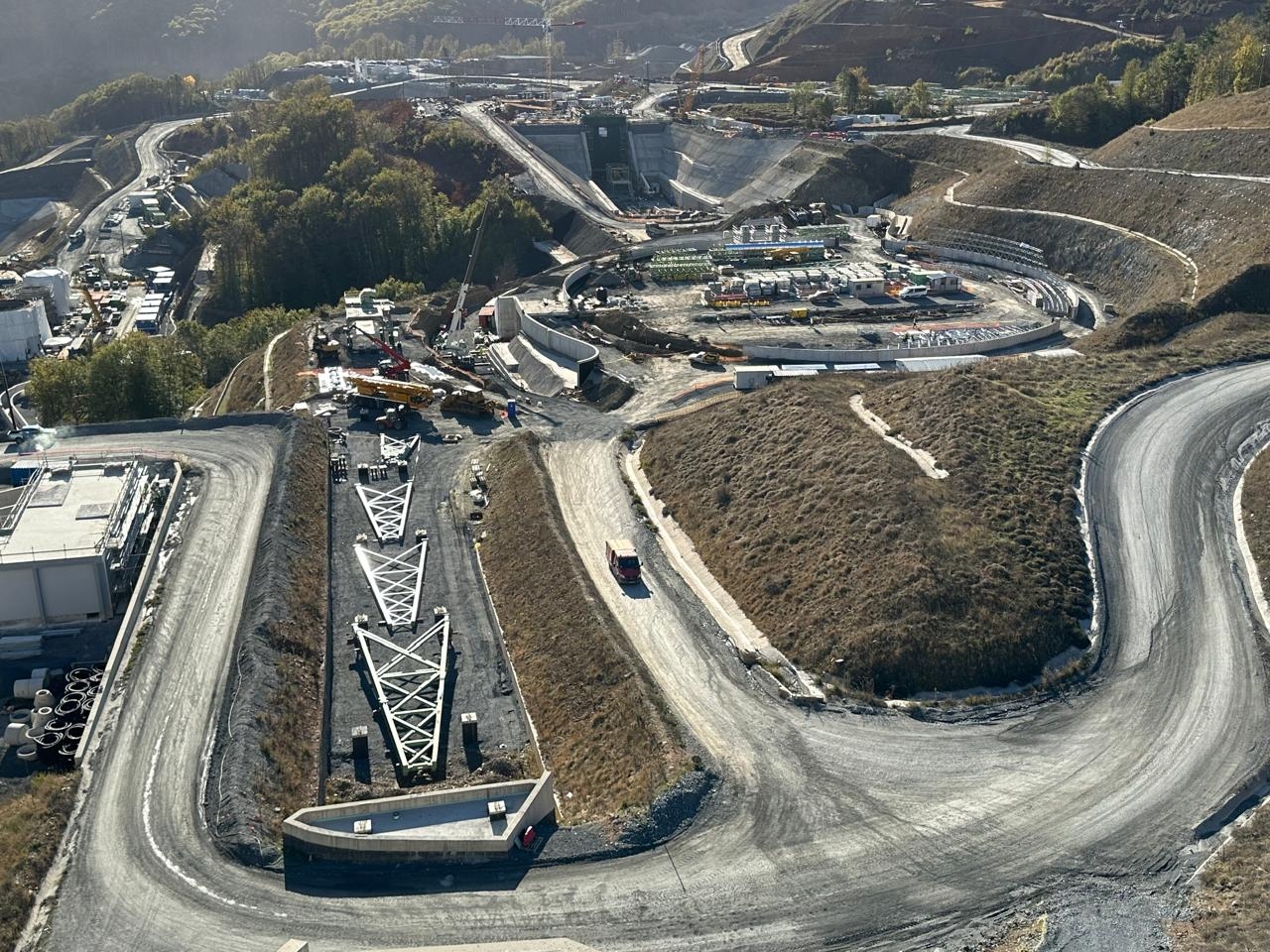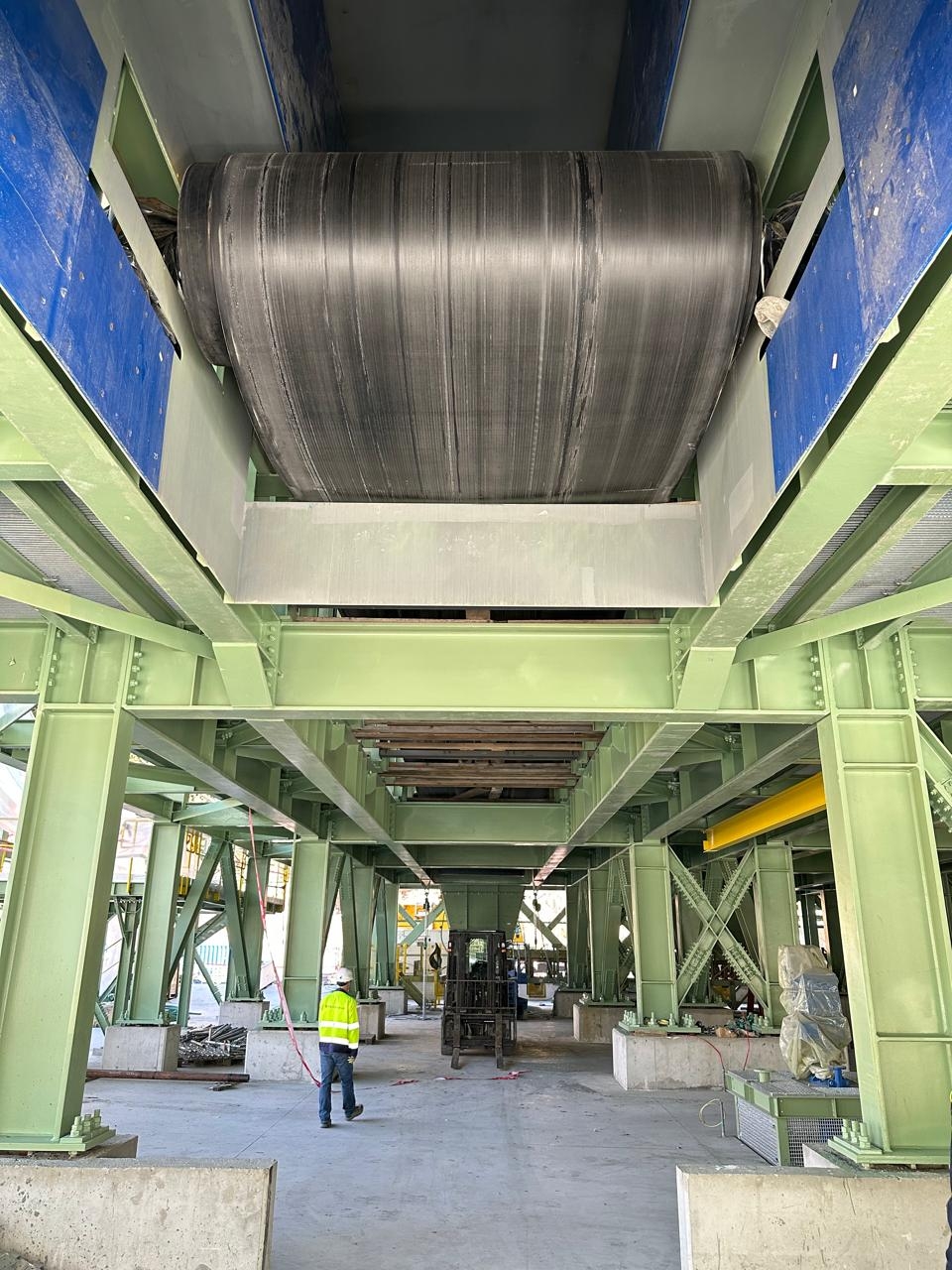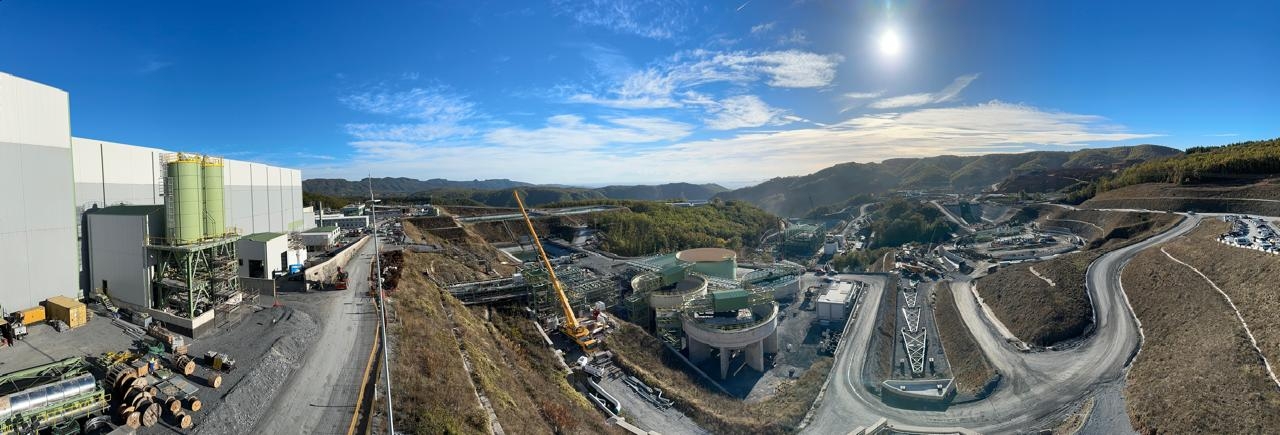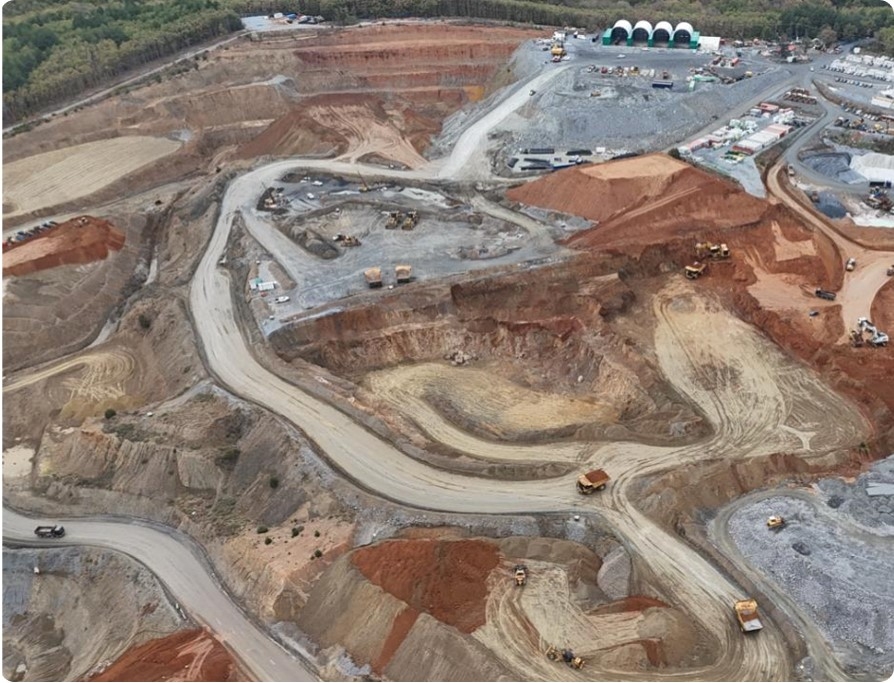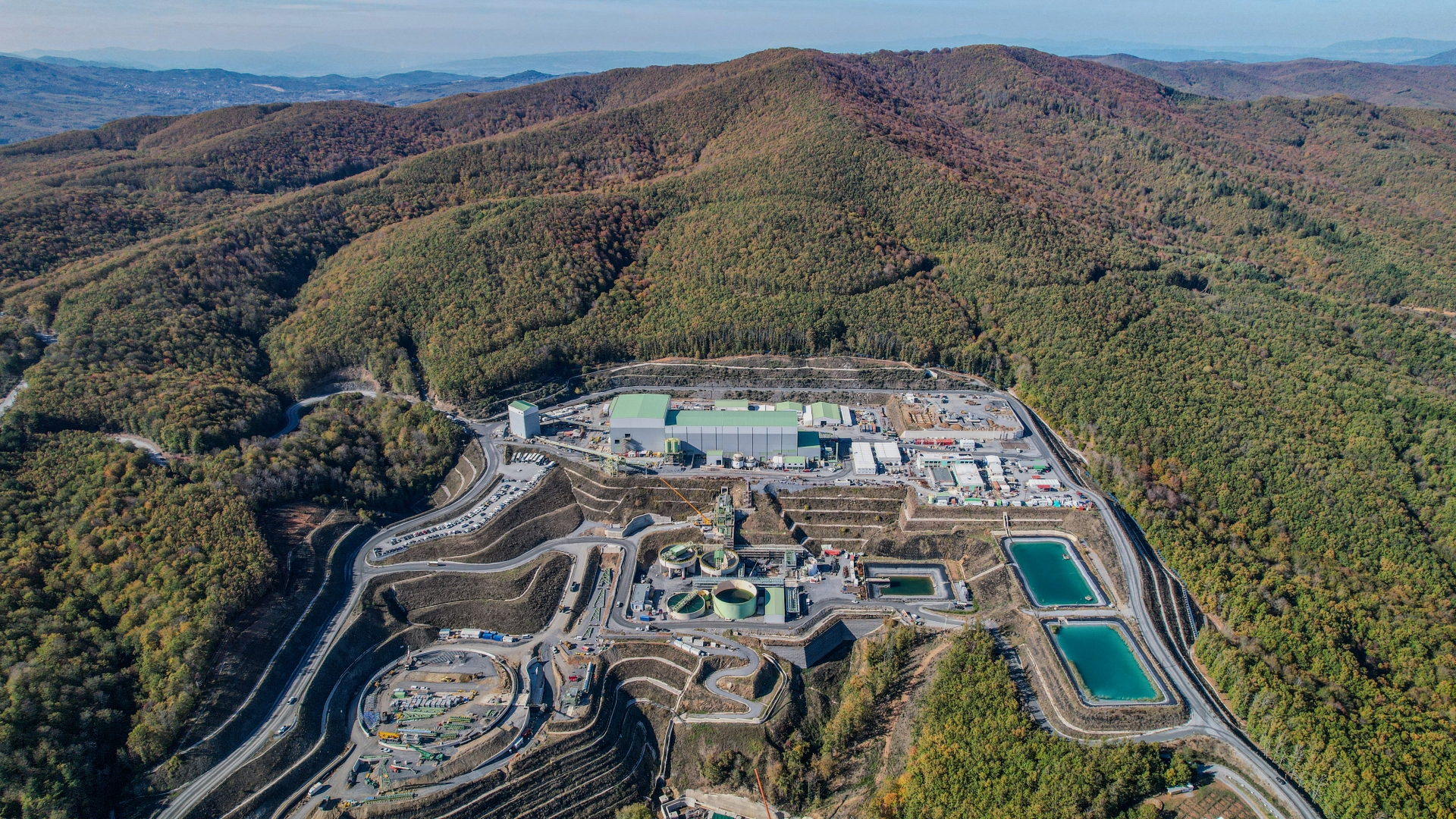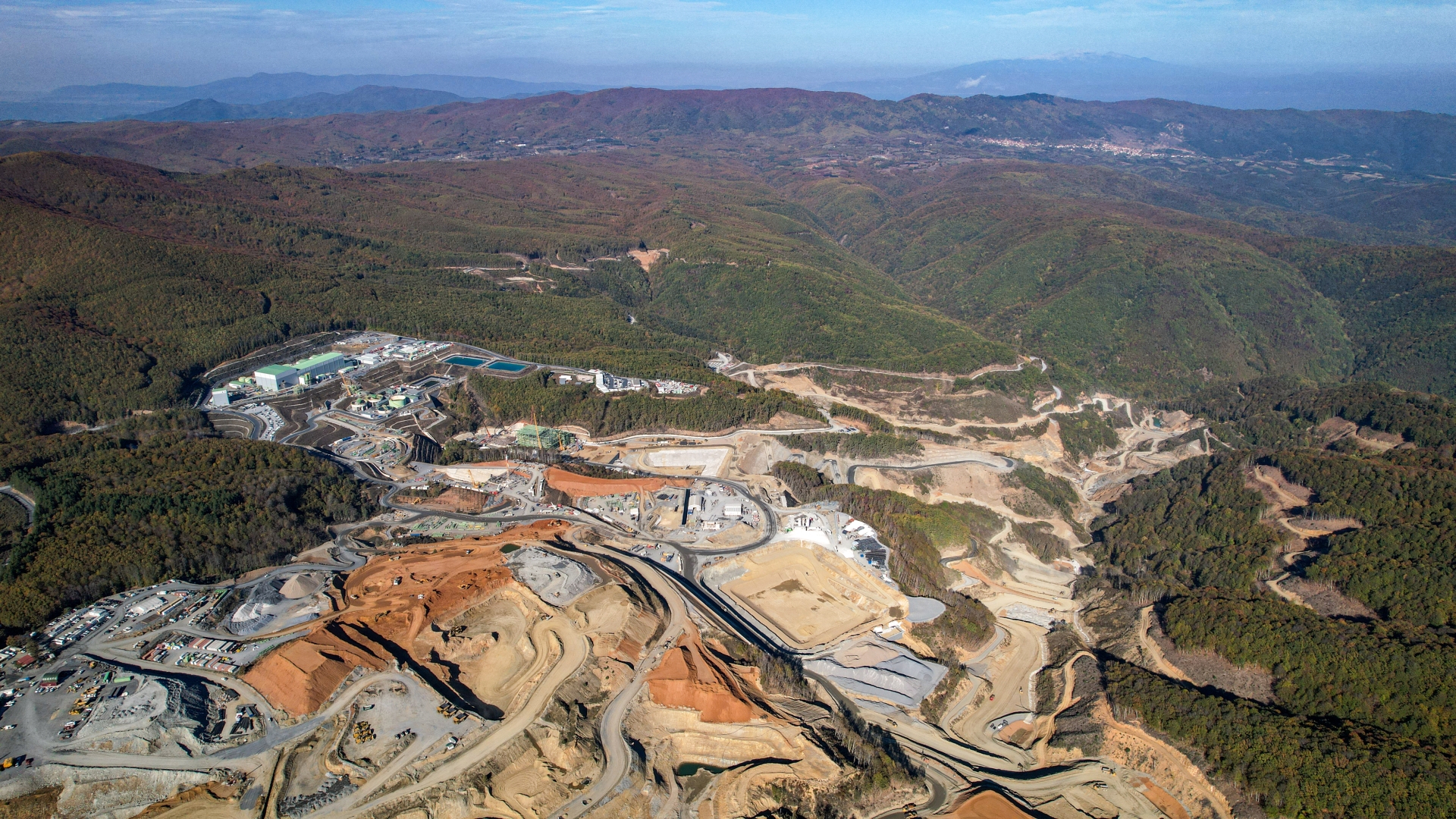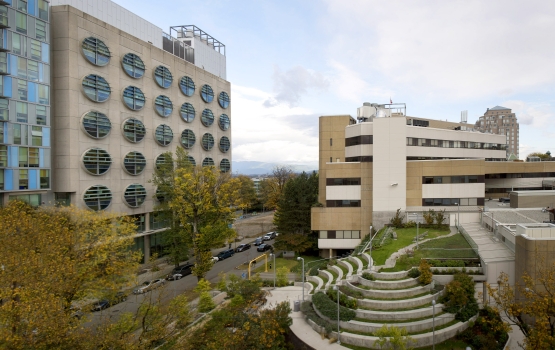SKOURIES (GREECE)
The Skouries project is a copper-gold deposit located on the Halkidiki Peninsula in northern Greece.
This copper-gold porphyry deposit will be mined using a combination of conventional open pit and underground mining techniques. Based on the 2022 Project Feasibility Study, the initial life of mine is 20 years, and it is expected to produce on average 140,000 ounces of gold and 67 million pounds of copper per year. First copper-gold concentrate production is expected toward the end of the first quarter of 2026, with commercial production expected in mid-2026.
Skouries Project Progress
Updated: October 2025
Advancing Skouries
By the end of the third quarter of 2025, Phase 2 construction was 73% complete. First production of copper-gold concentrate is expected toward the end of the first quarter of 2026, with commercial production expected in mid-2026.
The Skouries Project, part of the Kassandra Mines complex, is located within the Halkidiki Peninsula of Northern Greece and is a copper-gold porphyry project. In January 2022, Eldorado published the results of the Skouries Project Feasibility Study with a 20-year mine life and expected average annual production of 140,000 ounces of gold and 67 million pounds of copper.
Capital Estimate and Schedule
In Q1 2025, the capital cost estimate for Skouries was revised to $1.06 billion, with an additional $154 million in accelerated operational capital prior to commercial production, announced in a news release dated February 5, 2025. The project remains fully funded through equity and project financing. The Commercial Loan Facility and the RRF Facility totalling €680.4 million ($798.9 million) are now fully drawn.
First production of the copper-gold concentrate is expected toward the end of Q1 2026 and commercial production is expected in mid-2026, with 2026 gold production projected to be between 135,000 and 155,000 ounces and copper production projected to be between 45 and 60 million pounds.
Project capital totalled $137.7 million in Q3 2025 and $338.6 million during the nine months ended September 30, 2025. Accelerated operational capital was $17.7 million in Q3 2025 and $51.3 million during the nine months ended September 30, 2025. At September 30, 2025, cumulative project capital invested towards Phase 2 of construction totalled $843.4 million1 and the cumulative accelerated operational capital totalled $58.2 million.
In 2025, the project capital spend has been revised upward to $440 to $470 million reflecting the acceleration of work across several non-critical path areas and proactive de-risking efforts. The accelerated operational capital remains on track and is expected to be between $80 and $100 million.
1 Excludes capitalized depreciation of $1.9 million in Q3 2025, and $5.1 million for the nine-month period ended September 30, 2025 (Q3 2024 - $nil, 2024 - includes $3.2 million) and corporate allocations of $0.3 million in Q3 2025, and $1.0 million for the nine-month period ended September 30, 2025 (Q3 2024 - $nil, 2024 - includes $1.5 million)
As at September 30, 2025 overall project progress was 73% complete for Phase 2 of construction, and 86% when including the first phase of construction.
Filtered Tailings Plant
Work continues to progress on the filtered tailings plant, which remains on the critical path. The filtered tailings building structural steel installation was 80% complete at the end of the quarter and approximately 92% at the end of October. Mechanical work progressed with the assembly of the filter presses with four complete at quarter end and the remaining two on plan for completion in November.
The compressor building steel structure assembly reached 78% complete over the quarter and approximately 98% at the end of October. Mechanical installations are advancing with the installation of all six compressors and air receivers installed.
The filter plant tank farm construction has progressed with all five tanks assembled and water tested with internal coating work now in progress.
Primary Crusher
Progress continues on the construction of the crusher building structure. The concrete has advanced to the final elevation above the foundation with the final wall lifts advancing. The primary crusher is assembled in position and work is underway on cable tray and internal structural steel stairways and platforms. Conveyor foundations between the primary crusher and process plant, inclusive of the coarse ore stockpile are complete. The stockpile dome foundation is expected to be complete in November, and pre-assembly of the stockpile dome has commenced. Conveyor pre-assembly is advancing and conveyor support steel installation is underway. The first of the three reclaim feeders and associated chute work has been installed and pre-assembly continues on the remaining two reclaim feeders.
Process Plant
Work in the process plant continues to expand to additional work fronts for cable tray, cable, piping and mechanical installations. The final building foundations for support infrastructure were completed in early October. Structural, mechanical, piping and electrical installations continue in the support infrastructure areas.
Work continues on the support infrastructure with the process plant substation electrical installations underway. The lime plant, flotation blowers, compressors and guar areas are all in various stages of mechanical, piping and electrical installations. The control building structure is complete and electrical installation work is underway on the first two levels.
Pre-commissioning of the concentrate filter presses has been completed along with all water testing in the flotation cells and tanks. Preparations are underway to start pre-commissioning of the pebble crusher with the addition of first fills and punch listing construction completion items. Piping and cable installations continued to ramp up over the quarter with a focus on flotation, grinding and utilities such as process water and fire water.
Thickeners
Construction of the three tailings thickeners progressed on plan during the quarter. Water testing of the first two thickeners has been completed, and piping installations have commenced as the pipe rack installations are completed. Work is advancing on the associated infrastructure with the pumphouse building piping and electrical work underway, and tank installations in the flocculant building. The thickeners secondary substation building is in the final interior finishing stage with electrical installations planned to start in Q4 2025.
Integrated Extractive Waste Management Facility
During the quarter, foundation preparation for the Karatzas Lakkos (KL) embankment continued, with notable commencement of the placement of the under-drainage layer in the center of the valley. At water management pond 2, liner placement preparation, consisting of shotcrete and geofabric placement commenced to enable the installation of the high-density polyethylene liner during Q4 2025.
Construction of the low-grade ore stockpile (lower part) started in the quarter. This area is important to the sequence of the KL embankment, which will be constructed over the lower part of the low-grade ore stockpile. The construction water management system has been upgraded significantly. The installed diversions, sumps (15), pumps and pipes are intended to mitigate water run-off from impacting construction progress.
Underground Development
Underground access development rates continued to accelerate during the quarter and are currently achieving approximately 400 metres per month. At the end of the quarter, the test stope drilling and the two raise-bore slots were completed, and the first test stope blast was successfully executed at the end of October.
Engineering
Engineering works are substantially complete. The focus recently has been on closing out the remaining engineering activities and providing technical clarifications when required to support construction.
Procurement
All major procurement is complete. The focus continues on managing and expediting deliveries to support construction and the close-out of completed purchase orders.
Operations including Operational Readiness
The open pit mine has ramped up operations and at the end of Q3 2025 was operating with three (of four) crews. At the end of Q3 there was approximately 349,000 tonnes of open pit and underground ore on stockpile, containing approximately 9,800 oz of gold and 2.7 million pounds of copper. Grade control drilling covering 75% of the Phase 1 open pit has been completed. Operational readiness efforts are ongoing in Safety, Asset Management, Processing, and Supply Chain areas. Middle management for key positions in open pit mining and mobile maintenance have been recruited and onboarded with supervisory capacity bolstered in Q3 2025.
Workforce
As at September 30, 2025, there were approximately 2,000 personnel working on site, including 390 Skouries employees of which 236 were Skouries operational personnel.
KEY HIGHLIGHTS
Location
Mine type
Metals mined
Initial expected mine life
Deposit type
Ownership
*Based on Proven & Probable Mineral Reserves. Refer to Reserves and Resources for more information on Mineral Reserves.
Virtual Tour
Best-in-class Environmental Design
Filtered Tailings
The Skouries project design includes filtered tailings, an innovative method that makes the tailings management process safer and provides additional environmental benefits compared to other tailings management options. During mining, ore is crushed, ground and processed to separate valuable minerals from the surrounding rock. The residual leftover rock and water from this process is called tailings. Traditionally, tailings were stored in liquid form in large facilities, known as tailings ponds. Modern filtered methods remove the excess water resulting in a sandy material which is then stacked and compressed. Less space is required for its storage into tailings management facility areas (TMF).
At Skouries, only one TMF will be required, instead of the two that were planned in the initial design and would have been required in the case of traditional liquid tailings management.
Eldorado has used this technology successfully at our Efemçukuru operation in Türkiye and at our Olympias Mine in Greece. Filtered tailings offer major environmental benefits such as:
Geotechnical stability
Up to 90% of the water is removed from the tailings using filtration. These de-watered solids (similar to a moist sand) are then conveyed and compacted within the storage facility to form a geotechnically stable & solid mass.
Water savings
Filtered tailings technology enables us to maximize water recycling and re-use it in the production cycle, thereby minimizing the consumption of fresh water.
Smaller footprint
Filtered tailings result in up to a 40% smaller environmental footprint, further minimizing environmental impact.
Protection of Water and Facilities
We are reducing water consumption with targeted projects, such as filtering and recycling. We are also reducing groundwater inflows by pre-draining waters and re-injecting them into the aquifer. For water outside the mine site, we have constructed water diversion channels to keep surface waters from even entering the mine site. For water that unavoidably comes into contact with mining activities at the mine, we will both have a water treatment plant and re-use water in day-to-day operations.
Parallel Rehabilitation
The rehabilitation of liquid tailings disposal sites is usually possible after the end of a mine’s lifetime. Thanks to the filtered method, due to the solid form of the tailings, it is possible to gradually regenerate the disposal facilities in parallel with mining activities. That means that the site will be rehabilitated and ready to hand back to the local community sooner after the end of mining activity.
Backfilling tunnels & open pit with mining tailings
Part of the pre-strip material from the open pit is used to build the waste rock dam, water management-ponds and various other site infrastructure works. The excess will be used to gradually rehabilitate the tailings management facility. Mining tailings will be used to fill in the areas that were mined out in the underground mine, as well as the open pit to restore the original terrain.
90%
Water removed from tailings
40%
Smaller environmental footprint with dry-stack technology
Indicative Operating Data
The initial mine life is 20 years, based on Skouries Technical Report (NI 43-101) published January, 2022
| Total Mineralized Material Mined | 147 Mt |
| Average annual gold production | 140,000 oz |
| Average annual copper production | 67 Mlbs |
| Average cash operating costs (LOM) | $(365)/oz |
| Average AISC (LOM) | $(6)/oz sold |
| Gold recovery | 83% |
| Copper recovery | 90% |
| Au grade | 0.77 g/t Au |
| Cu grade | 0.50% Cu |
| Initial Capital Costs (US $) - Initial Phase 1 Capex | $845 M |
| Total sustaining capex (US $) | $850 M |
| Gold price | $1,500/oz |
| Copper price assumption used in financial analysis | $3.85/lb |
| (US $) | $1.3 B |
| IRR (after tax) | 19% |
| Payback period | < 4 years |
Geology and Mineralization
The Skouries porphyry copper-gold deposit is centred on a small (less than 400m in diameter), pencil-porphyry stock that intruded schist and gneiss of the Paleozoic Vertiskos Formation of the Serbo-Macedonian Massif, NE Greece. Mineralization extends for more than 920m depth from surface.
The porphyry is characterized by at least four intrusive phases that are of probable monzonite to syenite composition, but contain an intense potassic alteration and related stockwork veining that overprints the original protolith.
Potassic alteration and copper mineralization also extend into the country rock; approximately two thirds of the measured and indicated tonnes and 40% of the contained metal are hosted outside the porphyry.
The potassic alteration is syn- to late-magmatic in timing and is characterized by K-feldspar overgrowths on plagioclase, secondary biotite replacement of igneous hornblende and biotite, and a fine-grained groundmass of K-feldspar-quartz with disseminated magnetite.
Four main stages of veining are recognized: 1) an early stage of intense quartz-magnetite stockwork; 2) quartz-magnetite veinlets with chalcopyrite ± bornite; 3) quartz-biotite-chalcopyrite ± bornite-apatite-magnetite veinlets; and 4) a localized, late stage set of pyrite ± chalcopyrite-calcite-quartz veins. The host porphyry and potassic alteration at Skouries were coeval and formed during the Early Miocene.

EXPLORATION
Exploration at Skouries is focused on identifying and testing porphyry targets within the project area, including the Tsikara and Fisoka prospects. Ongoing targeting activities include geological mapping, systematic soil sampling and geophysical surveying.


Skouries Project Brochure
REPORTS
| REPORT TITLE | LINK |
|---|---|
| Skouries Technical Report - January 2022 | Download PDF |
| Skouries Technical Report - March 2018 | Download PDF |
| Skouries Technical Report - July 2011 | Download PDF |
Environmental and Social Impact Assessment (ESIA)
| REPORT TITLE | LINK |
|---|---|
| Non-technical summary (NTS) | Download PDF |
| Complete assessment file (ZIP) | View Reports |
| ESIA appendices | View Reports |
| ESMS framework | Download PDF |
| Stakeholder Engagement Plan | Download PDF |
| E&A Management Plans | View Reports |
| Environmental & Social Action Plan | Download PDF |
Regulatory Environmental Impact Assessment (EIA)
| REPORT TITLE | LINK |
|---|---|
| Non-technical summary (NTS) | Download PDF |
| Complete assessment file | View Reports |
| EIA appendices | Download PDF |
| EIA maps / drawings | View Reports |




